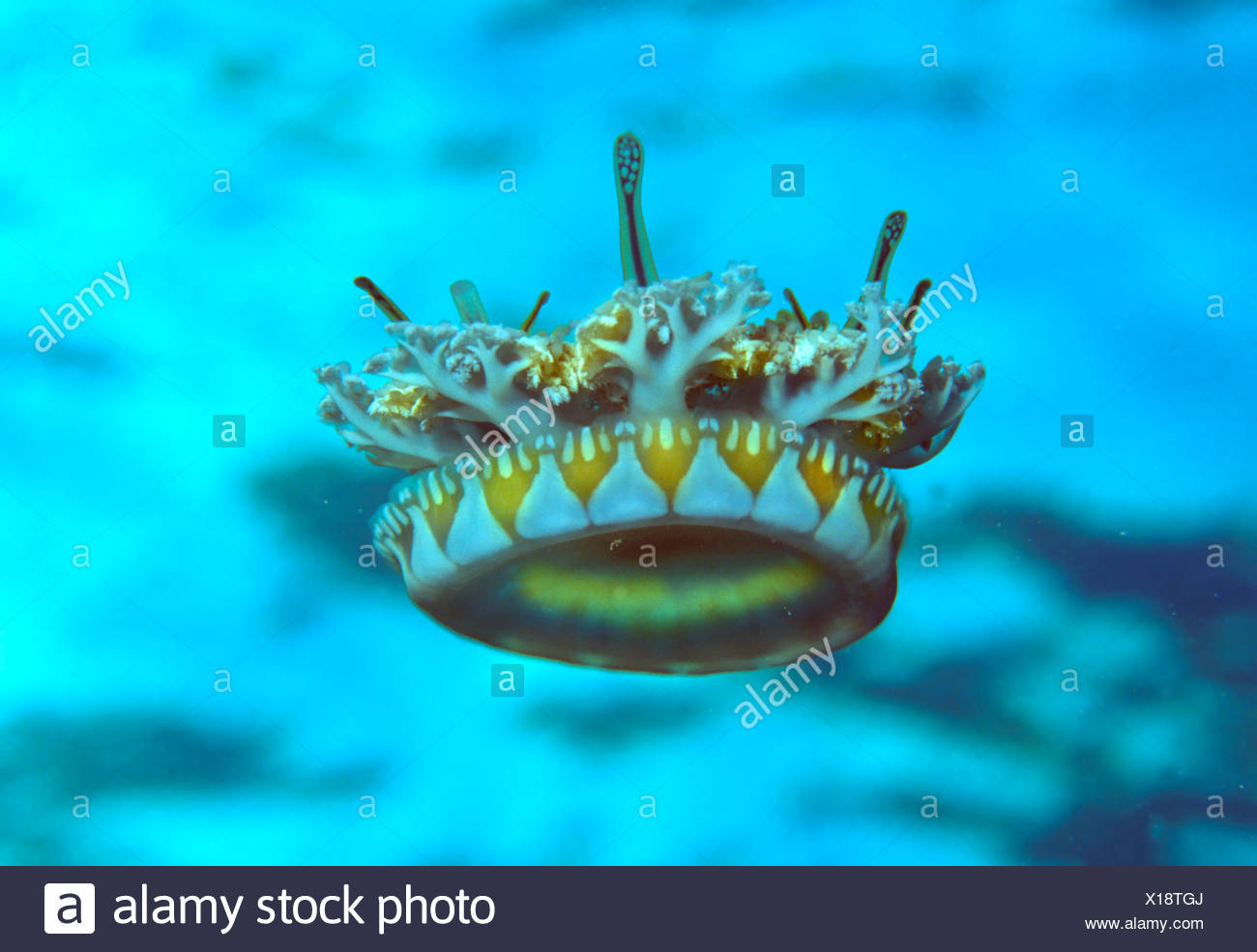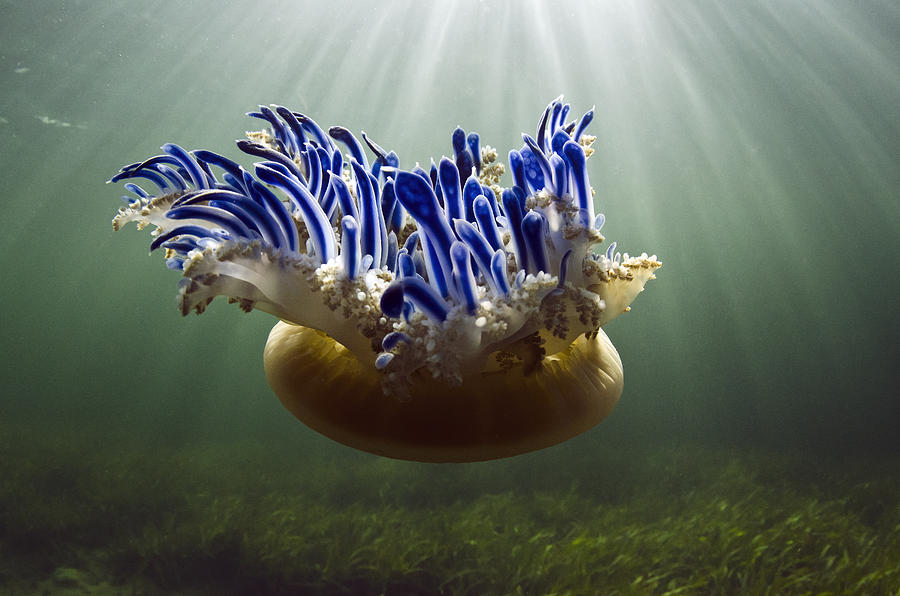


It thereby aims to contribute to understand the ecology of the jellyfish and to deliver a dataset for further monitoring. The present study, therefore, aims to provide data on abundance, habitat selection and life cycle elements like size classes and the commensalism with Idiomysis tsurnamali for Cassiopea in Northern Red Sea fringing reef environments. 2007), alterations in distribution and abundance of Cassiopea sp. As invasive species are a principle threat to biodiversity and responsible for enormous economic losses (Bolton and Graham 2006), and especially jellyfish are known for their direct negative effect on human enterprises (Purcell et al. 2004 Özgür and Öztürk 2008 Panucci-Papadopoulou et al. was reported to increase its spatial distribution by invading into, for example, Hawaiian and Mediterranean waters (Çevik et al.
#Cassiopeia jelly fish Patch#
( 1988) for the Nichupte lagoon system off the Mexican Caribbean coast and by Mergner and Schuhmacher ( 1981) for a 25 m² seafloor patch in the Northern Red Sea. However, quantitative data are only provided by Collado Vides et al. in the Caribbean and the Red Sea, were first summarized by Mayer ( 1910). Reports on remarkably high Cassiopea abundances, e.g. ( 2004) described Cassiopea as globally distributed, occurring in shallow, tropical inshore marine waters on sandy mudflats. However, information about its spatial distribution in combination with abundance is barely available. as a susceptible indicator species for environmental phosphates. ( 2006) demonstrated the potential of Cassiopea sp. Additionally, the upside-down jellyfish has drawn attention as a possible bioindicator species for low-nutrient environments. Fitt 1984 Hofmann and Kremer 1981 Ludwig 1969 Rahat and Adar 1980). 1978) cues for larval settlement and metamorphosis, as well as factors influencing strobilation (e.g. 1991 Curtis and Cowden 1971 Fleck and Fitt 1999 Fitt and Costley 1998 Hofmann et al. Many studies have focused on factors influencing the development of Cassiopea, dealing with endogenous (Thieme and Hofmann 2003a, b) or exogenous (e.g. Bigelow 1900 Gohar and Eisawy 1960b Smith 1936). The lifecycle of the scyphozoan Cassiopea is classically metagenetic and, therefore, alters between a medusoid and polypal stage, with an intermediate larval stage (e.g. Bacescu 1973 Hofmann and Kremer 1981 Thornhill et al. Interorganismic interaction-typically an ecological topic-such as the jellyfish’s symbiotic relationship with dinoflagellates or the commensalistic relationship with the crustacean mysid Idiomysis tsunrnamali (Bacescu 1973) has been addressed by marine scientists from various fields (e.g. In summary, the findings of the present study (1) characterize Cassiopea as one of the key organisms in investigated benthic habitats, (2) indicate active habitat selection by the jellyfish and (3) may hint to an unexplored life cycle of Cassiopea with central role of seagrass meadows providing cues for larval settlement and metamorphosis in the absence of mangroves.Ĭassiopea sp., commonly referred to as mangrove or upside-down jellyfish, represents a study organism within several scientific disciplines. Cassiopea abundance and size as well as association patterns with mysids differed between most of the surveyed habitats. Additionally, this study revealed that 65% of all observed Cassiopea specimens were associated with the commensalistic crustacean mysid Idiomysis tsurnamali. Within coral reef habitats, maximum abundance of up to 31 animals m −2 and benthic coverage of up to 20% were detected. exhibited a highly patchy distribution within the entire study area with mean abundance of 1.6 ± 0.3 animals m −2 and benthic coverage of 3.2%. This study, therefore, presents the results of field surveys conducted within four different benthic habitat types (coral reef, seagrass meadow, reef-sand transition and sand flat) in the Northern Red Sea. However, information about its spatial distribution in combination with abundance, habitat specificity and life cycle elements is barely available. represents a prominent invasive species and a potential bioindicator for nutrient monitoring in coral reefs.

The zooxanthellate mangrove jellyfish Cassiopea sp.


 0 kommentar(er)
0 kommentar(er)
